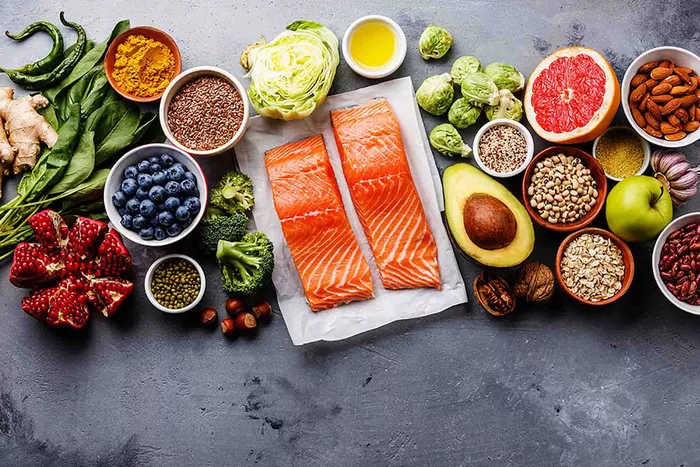Cooking a whole duck in the Chinese style is a culinary feat that has been perfected over centuries. It is a dish that not only tantalizes the taste buds but also showcases the rich heritage and techniques of Chinese cuisine. From the crispy skin to the tender and flavorful meat, a well-prepared Chinese-style whole duck is a centerpiece that can elevate any dining occasion. In this extensive guide, we will explore the intricate process of selecting the right duck, preparing it meticulously, and employing various cooking methods to achieve a dish that is both delicious and visually stunning.
Types of Ducks Suitable for Chinese Cooking
Pekin Duck: Pekin Duck is perhaps the most renowned variety for Chinese-style preparations. It is characterized by its large size, plump body, and a relatively high fat content. The skin of a Pekin Duck is thick and smooth, which is ideal for achieving that signature crispy texture. When roasted, the fat renders out, leaving the skin golden and crackling. The meat of a Pekin Duck is tender and has a mild flavor that pairs well with the various seasonings and sauces used in Chinese cuisine. These ducks are often raised specifically for the purpose of being used in classic dishes like Peking Duck.
When selecting a Pekin Duck, look for one with a healthy appearance. The skin should be intact and free from blemishes or discoloration. The eyes should be clear, and the body should feel firm and well-rounded. A duck that is too thin may lack the necessary fat for a good roasting result.
Muscovy Duck
Muscovy Ducks are another option. They have a leaner meat compared to Pekin Ducks, which can be appealing to those who prefer a less fatty dish. The flavor of Muscovy Duck is slightly more pronounced and has a gamey undertone. The skin is also thinner but can still be made crispy with the right cooking technique. Muscovy Ducks are often used in some regional Chinese cuisines where a different flavor profile is desired.
When choosing a Muscovy Duck, pay attention to its size and overall condition. It should have a good proportion of meat to bone and a clean, fresh smell. The feathers should be well-plucked, and any remaining pinfeathers should be minimal.
Assessing the Quality and Freshness of the Duck
Appearance and Texture: A fresh duck should have a bright and even color. The skin should be a creamy white or a light tan, depending on the breed. Avoid ducks with a dull or grayish skin, as this may indicate that it is not fresh. The texture of the skin should be smooth and elastic. When you press on the skin, it should spring back slightly. The body of the duck should be firm and not overly soft or flabby. Check for any bruises or cuts on the skin, as these can affect the quality of the final dish.
The feet and beak of the duck can also provide clues about its freshness. They should be clean and free from any signs of discoloration or drying out. If the feet are shriveled or the beak is cracked, it may suggest that the duck has been stored for a long time.
Smell
The smell of the duck is a crucial indicator of its freshness. A fresh duck should have a mild, slightly gamey aroma. If the duck has a strong, unpleasant odor, it is likely spoiled and should not be used. The smell of ammonia or a rancid odor is a definite sign of spoilage. It is advisable to purchase ducks from a reputable source, such as a trusted butcher or a well-known grocery store with a good turnover of fresh poultry.
Preparing the Duck
Removing Feathers and Giblets: Start by carefully removing any remaining feathers or pinfeathers from the duck. Use a pair of tweezers or a small knife to pluck them out. Make sure to check all areas, especially around the wings and the back. Next, remove the giblets from the cavity of the duck. The giblets usually include the liver, heart, and gizzard. These can be saved for other uses, such as making a stock or a gravy. Rinse the inside and outside of the duck thoroughly under cold running water to remove any blood or impurities.
It is important to be thorough in this step to ensure a clean and hygienic final product. Any remaining feathers or debris can affect the taste and texture of the cooked duck.
Trimming Excess Fat and Skin
While a certain amount of fat is necessary for a delicious roast duck, excessive fat can make the dish overly greasy. Trim some of the large deposits of fat around the neck and the cavity opening. However, be careful not to remove too much of the skin, as it is crucial for achieving a crispy texture. You can also trim any loose or ragged edges of the skin to give the duck a neater appearance.
The goal is to have a well-proportioned duck with an appropriate amount of fat left for roasting. This will ensure that the skin crisps up nicely while the meat remains tender and juicy.
Proper Storage
Refrigeration: If you have leftover Chinese-style whole duck, it should be stored properly to maintain its quality. Let the duck cool completely before storing. Wrap the remaining duck tightly in aluminum foil or place it in an airtight container. Store it in the refrigerator. It can be kept in the refrigerator for about 2 to 3 days. When refrigerating, make sure to keep it away from other strong-smelling foods, as the duck can absorb odors easily.
If you have any leftover sauces or condiments, store them separately in sealed containers. The sauces can be reheated and used to enhance the flavor of the reheated duck.
Freezing
To store the duck for a longer period, freezing is an option. Wrap the cooled duck in plastic wrap and then aluminum foil or place it in a freezer-safe bag. Label it with the date and contents. Frozen duck can be stored for up to 3 months. When freezing, it is best to cut the duck into smaller portions if possible. This makes it easier to thaw and reheat only the amount you need.
It is important to note that the texture of the skin may change slightly after freezing and thawing. It may not be as crispy as when freshly cooked, but the flavor of the meat will still be intact.
Reheating Methods
Oven Reheating: The oven is a good option for reheating Chinese-style whole duck. Preheat the oven to 325°F (160°C). Place the duck or the desired portions on a baking sheet and cover it with aluminum foil. Reheat it in the oven for about 15 to 20 minutes until it is heated through. If you want to try to restore some of the crispiness of the skin, you can remove the foil during the last 5 minutes of reheating and increase the oven temperature to 400°F (200°C). Baste the duck with any remaining sauce or a bit of honey or oil to give it a fresh look and flavor.
Oven reheating helps to heat the duck evenly and can somewhat revive the texture and flavor.
Microwave Reheating (with Caution)
The microwave can be used to quickly reheat the duck, but it should be used with caution. Place the duck in a microwave-safe dish and cover it with a paper towel or a microwave-safe lid. Heat it on medium power for short intervals, about 30 seconds to 1 minute at a time, and check the temperature and texture. Microwave reheating can make the skin less crispy, but it is a convenient option if you are short on time. If you want to improve the texture after microwave reheating, you can place the duck in a hot skillet for a minute or two to crisp up the skin.
Another option is to use a steamer to reheat the duck. This can help to maintain the tenderness of the meat, but the skin may not become crispy. Steam the duck for about 5 to 10 minutes until it is heated through.
Conclusion
Cooking a whole duck in the Chinese style is a labor of love and a journey through the rich traditions and flavors of Chinese cuisine. From the careful selection of the duck to the meticulous preparation and the various cooking methods, each step is crucial in creating a dish that is a true masterpiece. The perfect balance of crispy skin, tender meat, and a harmonious blend of flavors, along with the appropriate side dishes and condiments, can transform a simple meal into a memorable dining experience. Whether you are cooking for a special occasion or simply exploring the wonders of Chinese cooking, mastering the art of Chinese-style whole duck cooking is a rewarding endeavor that will surely impress family and friends alike. So, don your apron, gather your ingredients, and embark on this delicious adventure of creating a Chinese-style whole duck that will tantalize taste buds and leave a lasting impression.
Related Topics:























